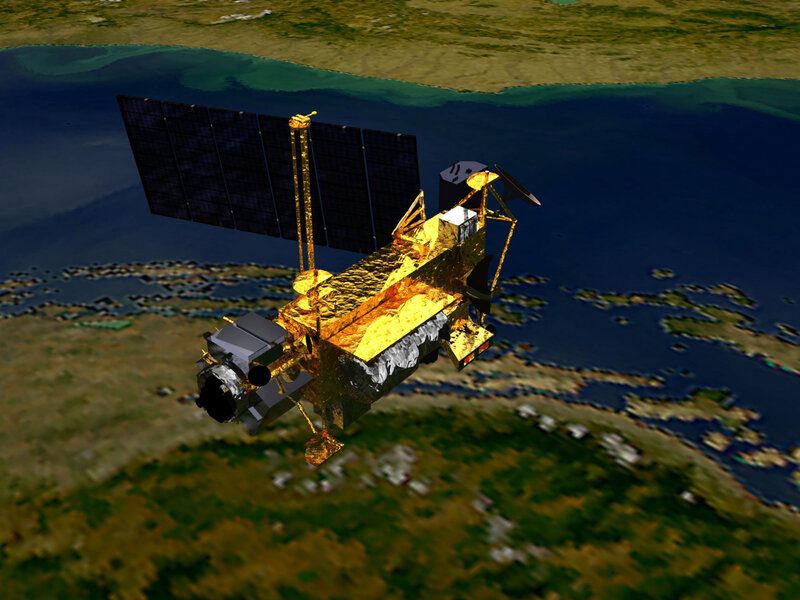NASA satellite falls on Canada as space junk. No one hurt.
Loading...
| Atlanta
The wait is over. NASA's bus-sized Upper Atmosphere Research Satellite (UARS) has fallen, becoming the largest runaway chunk of space junk to drop back down to Earth since two satellites, including the behemoth Sky Lab, punched the atmosphere in 1979.
"We can now confirm that #UARS is down!" reported the official NASA Twitter account. "Debris fell to Earth between 11:23 p.m. EDT Friday, Sept. 23, and 1:09 a.m. EDT Sept. 24."
The satellite, broken up into 26 titanium and other hard alloy pieces expected to survive the fiery descent, reportedly fell at least partly on land. Twitter and YouTube reports pinpointed landfall in Okotoks, Canada, near Calgary.
IN PICTURES: Stuff in Earth orbit
People from Maui to South Florida also reported seeing flashing pieces of the runaway satellite as it skidded across Earth's atmosphere at its orbital speed of 17,500 miles per hour. Debris found in western Canada would confirm NASA's prediction that the debris was likely to enter Earth's atmosphere near the Pacific and potentially scatter debris across a 500-mile-long zone.
Much like Skylab and the 2001 controlled re-entry of the Russian space station Mir, the dead UARS satellite – first launched in 1991 – caught the popular imagination, even though similar pieces of space junk return to Earth on an average of once a year. Though NASA put the odds of it actually hitting a human at 1 in 3,200, the prospect still touched the primal human concern of the sky falling.
"The risk to public safety is very remote," NASA soothed.
Only one person – Lottie Williams of Tulsa, Okla. – has ever reported being struck by space debris. A piece of metal fabric that weighed little more than a soda can struck her shoulder while she was out walking in 1997. It was a piece of a Delta 2 booster rocket attached to a satellite launched the year before. The Defense Department apologized to Ms. Williams in a letter.
Factors ranging from solar activity to the spinning of UARS' pieces – the largest of which was estimated at 300 pounds – made predicting the satellite's landfall difficult. NASA had put the US out of the strike zone earlier in the week, but by Friday acknowledged that pieces could, in fact, hit its country of origin. As the re-entry became imminent, NASA pinpointed Canada as part of the likely debris field.
Mark Matney of NASA's Orbital Debris team in Houston told CNN that exact prediction of where the pieces would fall was impossible.
"Part of the problem is, the spacecraft is tumbling in unpredictable ways, and it is very difficult to very precisely pinpoint where it's coming down even right before the re-entry," Matney said.
That explanation didn't please everyone. "Great NORAD can track Santa on his many stops around the world and provide video but can't tell me where … #UARS entered and landed?" tweeted Michael Miller, a former journalist in Mississippi.
Space watchers from Florida to Hawaii reported seeing satellite chunks in the night sky Friday. Robert Jeffcoat of Hawaii reported to CNN that he saw two flying objects, both of which left white trails.
"It's was like a comet, but smoke," he said. "I'm guessing it landed in the ocean, the way it was going."
A YouTube video purports to show the falling debris near Okotoks, where one piece reportedly left a large-sized crater. "Absolutely amazing," one person on the video says. "What's the chances of seeing this?"
Souvenir hunters should be aware; the US government still owns the chunks.





